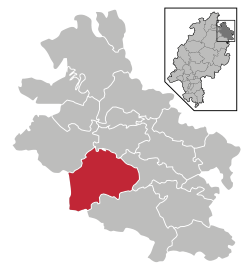이진 재컴파일러
Binary recompiler바이너리 재컴파일러는 실행 가능한 이진 파일을 입력으로 가져가고, 그 구조를 분석하고, 변환과 최적화를 적용하고, 최적화된 새로운 실행 바이너리를 출력하는 컴파일러다.[1]null
이항 재컴파일 개념의 기초는 1981년 최적 조립코드 변환기 XLT86의 개발로 게리 킬달에[2][3][4][5][6][7][8] 의해 마련되었다.[4][9][10][11]null
참고 항목
- 이진 최적화 도구(이진에서 이진까지)
- 이진 변환기(이진에서 이진)
- 디컴파일러(이진-소스)
- 디스어셈블러(이진-소스)
- 동적 재컴파일러(이진에서 이진)
- 트랜스컴퍼니(소스 간)
- Honeywell Liberator(Honeywell H200에서 IBM 1401 프로그램 실행)
참조
- ^ Mudge, Trevor; Reinhardt, Steve; Tyson, Gary. "Binary Recompilation and Combined Compiler/Architecture Enhancements Studies". umich.edu. University of Michigan (UM). Archived from the original on 2012-07-23. Retrieved 2012-07-23.
- ^ Kildall, Gary Arlen (May 1972). Global expression optimization during compilation (Ph.D. dissertation). Seattle, Washington, USA: University of Washington, Computer Science Group. Thesis No. 20506, Technical Report No. 72-06-02.
- ^ 킬 달, 게리 Arlen(1973-10-01)."글로벌 프로그램 최적화를 위한 통일 접근한다."(PDF).1연간 ACMSIGACT-SIGPLAN 심포지엄의 프로그래밍 언어의 원리에 회보(POPL). POPL '73.메사츄 세츠주, 보스턴 미국:194–206. doi:10.1145/512927.512945.hdl:10945/42162.S2CID 10219496.그 2017-06-29에 원래에서Archived(PDF)..([1])2006-11-20 Retrieved
- ^ a b Freiberger, Paul (1981-10-19). "Program translators do it literally - and sometimes in context". InfoWorld - News For Microcomputer Users. Special section: Computer compatibility. Vol. 3, no. 22. Popular Computing, Inc. p. 19. ISSN 0199-6649. Retrieved 2020-01-15.
[…] "Unless you have a translating scheme that takes account of the peculiar idiosyncrasies of the target microprocessor, there is no way that an automatic translator can work," explains Daniel Davis, a programmer with Digital Research. "You'll end up with direct transliterations." […] In spite of all these limitations, progress has been made recently in the development of translators. Most notably, Digital Research has introduced its eight- to 16-bit assembly code translator. Based on research performed by Digital Research president Gary Kildall, the XLT86 appears to offer advances over previously available software translator technology. Like Sorcim's Trans and Intel's Convert 86, Kildall's package translates assembly-language code from an 8080 microprocessor to an 8086. However, Kildall has applied a global flow analysis technique that takes into account some of the major drawbacks of other translators. The procedure analyzes the register and flag usage in sections of 8080 code in order to eliminate nonessential code. According to Digital Research programmer Davis, the algorithm Kildall uses allows the translator to consider the context as it translates the program. Until now, one of the major problems with any translator program has been the inability of the software to do much more than transliteration. If Digital Research's new translator actually advances the technology to the point where context can be considered, then more software translators may proliferate in the microcomputer marketplace.
- ^ Wharton, John Harrison (1994-08-01). "Gary Kildall, industry pioneer, dead at 52: created first microcomputer languages, disk operating systems". Microprocessor Report. MicroDesign Resources Inc. (MDR). 8 (10). Archived from the original on 2016-11-18. Retrieved 2016-11-18.
- ^ "SPA Award to Dr. Gary A. Kildall: 1995 SPA Lifetime Achievement Award Winner". Software Publishers Association (SPA). 1995-03-13. Archived from the original on 2019-12-21. Retrieved 2019-12-21 – via www.digitalresearch.biz.
- ^ Swaine, Michael (1997-04-01). "Gary Kildall and Collegial Entrepreneurship". Dr. Dobb's Journal. Archived from the original on 2007-01-24. Retrieved 2006-11-20.
In March, 1995, the Software Publishers Association posthumously honored Gary for his contributions to the computer industry. They listed some of his accomplishments: […] In the 1980s, through DRI, he introduced a binary recompiler. […]
- ^ Huitt, 로버트, 유뱅크스. 미국, 고든, Rolander, 토마스"톰"앨런, 법학, 데이비드, 미셸, 하워드 E., 한라, 브라이언, 와튼, 존 해리슨, 베르크, 브라이언, 수애, Weilian, 킬 달, 스콧, Kampe, 빌(2014-04-25).법률, 데이비드(교육.).게리 킬 달의 "유산:그 CP/M IEEE마일스톤 Dedication"(PDF)(비디오 transscription).캘리포니아 PacificGrove에 사는, USA:컴퓨터 역사 박물관입니다.CHM 참조 번호:X7170.2014.2020-01-19 Retrieved.[…]Rolander:앞서 나는 게리 건축가 등의 문제를 접근하는 것을 좋아했다 언급했다.[…]그리고 그는 그의 데이터 구조의 가장 아름다운 그림을 그릴 것이다.[…]그리고 여기 데이터 구조 지금이 옳다고 확신했다 그[…]를 끝내자마자 방금 믿기 어려운 조증 부호화 모드로 갈 것이다.그는 아무렇지도 20개 정도의 시간은 하루에[…]그는 시간이 멈춘 동안 사라졌다 가곤 했다.그 행사의 커플에는 그는 어느 밤의 중심에 있게 될 수 있는 처음, 달리기도 무언가를 얻어요.그리고 감사 소프트웨어 쓰여진 것, 예를 들어,이 화면에 나오는 시간 사람에게 할 얘기가 있어 본 적이 있다.내 아내 로리가 나는 한밤중에, 로고가 한 예, 그런 전화를 있는지 말해 줄 것이다 XLT 86 다른, 그가 어디에서 그것을 처음 운영하는 것, 그가 누군가 그것을 보야 했어.따라서 그것 몇시인지 중요하지 않았어, 그는, 그리고 달리기를 보러 올 거 저에게 전화할 것.[…][2][3](33페이지)
- ^ Barry, Tim (1982-04-05). "XLT-86, a CP/M utility program by Digital Research". InfoWorld - The Newsweekly for Microcomputer Users. InfoWorld Software Review. Vol. 4, no. 13. Popular Computing, Inc. pp. 40–41, 53. ISSN 0199-6649. Retrieved 2020-01-25.
[…] XLT-86 is an analytical translator program written in PL/I-80. It reads the entire 8080 source program, assembles it to machine code, analyzes the register, memory and flag utilization, and emits an optimized 8086 assembly-language program. […] The program translation proceeds in a five-step process. First, the program is scanned and assembled to produce symbol values and locations. Second, the program structure is analyzed and decomposed into basic blocks. Third, the basic blocks are analyzed to determine program flow and resource usage. Forth, the block structure and register allocation data is gathered into a listing for the user. Fifth, the flow information and source program are used to produce the 8086 source program. […]
- ^ Kildall, Gary Arlen (1982-04-19). Swaine, Michael; Freiberger, Paul; Markoff, John Gregory (eds.). "Digital Research founder discusses his view of the business". InfoWorld - The Newsweekly for Microcomputer Users. Special section: CP/M. Vol. 4, no. 15. Popular Computing, Inc. p. 23–24. ISSN 0199-6649. Retrieved 2020-01-17.
[…] Kildall: […] A year and a half ago I was probably spending 75% of my time on the business and 25% on programming. XLT-86 was a product I was working on at that time, and it took me nine months to do it. That would have been a three-month project if I had been able to concentrate on it. […]
- ^ Kildall, Gary Arlen (June–July 1982). Bunnell, David Hugh; Edlin, Jim (eds.). "Gary Kildall - The Man Who Created CP/M: CP/M's Creator - An Indepth PC-Exclusive Interview with Software Pioneer Gary Kildall". PC Magazine. Operating Systems. Vol. 1, no. 3. Software Communications, Inc. pp. 32–38, 40. Retrieved 2020-01-17.
[…] PC: What are some of the complexities involved in translating a program from 8080 to 8086 form? Kildall: Straight translations at the source program level you can do pretty much mechanically. For example, an 8080 "Add immediate 5" instruction turns into an "Add AL 5" on the 8086 — very straightforward translation of the op codes themselves. The complexity in mechanical translation comes from situations such as this: The 8080 instruction DAD H takes the HL register and adds DE to it. For the 8086 the equivalent instruction would be something like ADD DX BX, which is fine, no particular problem. You just say the DX register is the same as HL and BX the same as DE. The problem is that the 8086 instruction has a side effect of setting the zero flag, and the 8080 instruction does not. In mechanical translation you end up doing something like saving the flags, restoring the flags, doing some shifts and rotates, and so forth. These add about five or six extra instructions to get the same semantic effect. There are a lot of sequences in 8080 code that produce very strange sequences in 8086 code; they just don't map very well because of flag registers and things of that sort. The way we get software over is a thing called XLT-86. It's been out six months or so. PC: By "better" code do you mean smaller? Kildall: Twenty percent smaller than if you just took every op code and did a straight translation, saving the registers to preserve semantics. PC: How does the size of the translated program compare to the 8080 version? Kildall: If you take an 8080 program, move it over to 86 land and do an XLT-86 translation, you'll find that it is roughly 10 to 20 percent larger. With 16-bit machines it's more difficult to address everything; you get op codes that are a little bit bigger on the average. An interesting phenomenon is that one of the reasons you don't get a tremendous speed increase in the 16-bit world is because you're running more op codes over the data bus. […]
추가 읽기
- Wenzl, 마티아스, Merzdovnik, 게오르크, 울리히,인 Johanna;Weippl, 에드가 R.(6월 2019년)[2월 2019년 11월 2018년 5월 2018년]."부터 이진 재작성에 기술-조사에 대한 상세한 지혜"(PDF).ACM컴퓨팅 조사.비엔나 오스트리아 52(3):49:1–49:36.doi:10.1145/3316415.49조.그 2021-01-15에 원래에서Archived(PDF)..(36페이지를)2021-11-28 Retrieved


